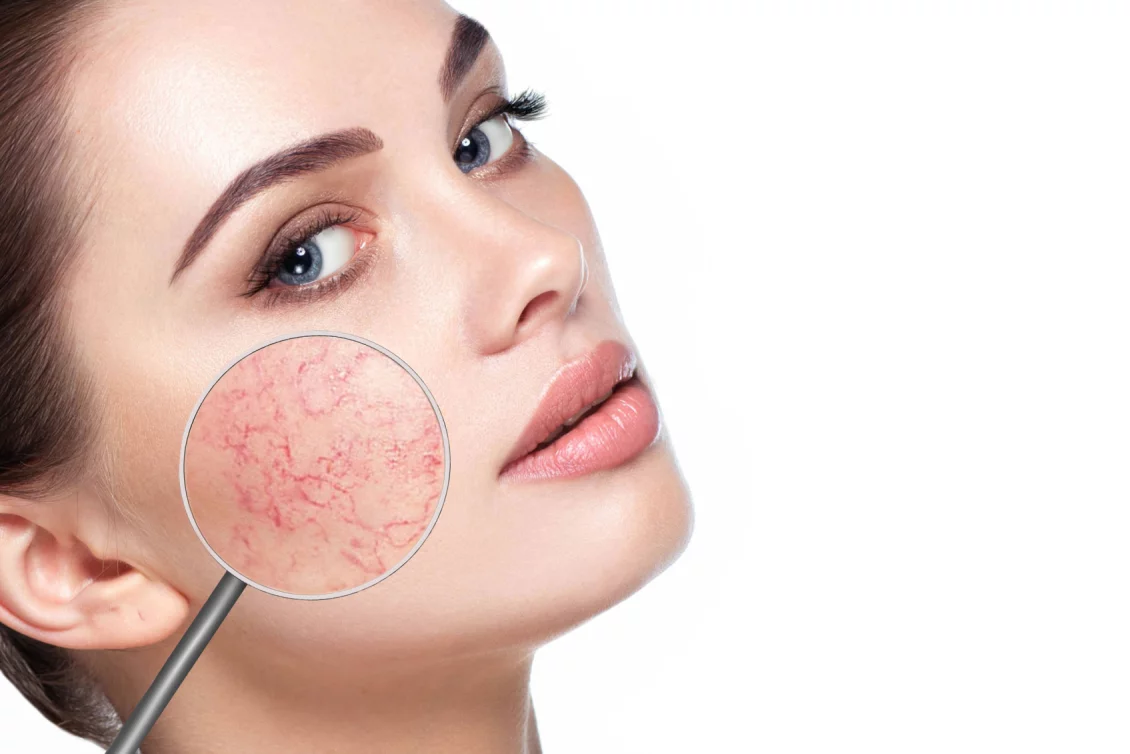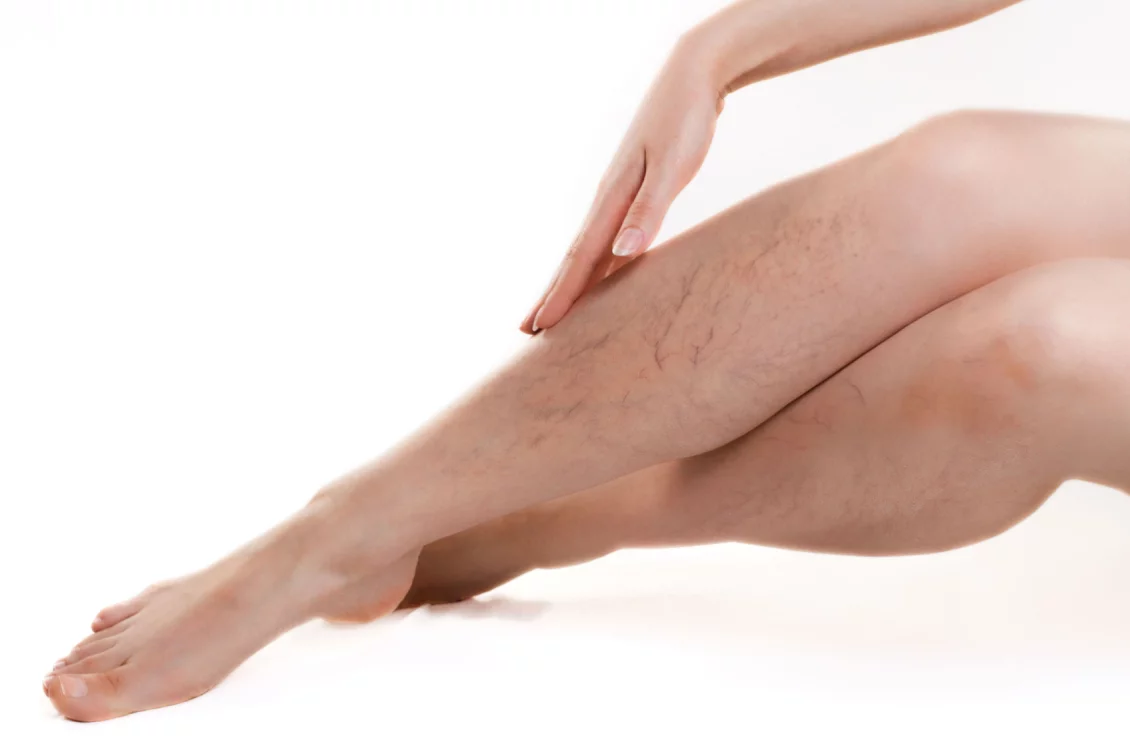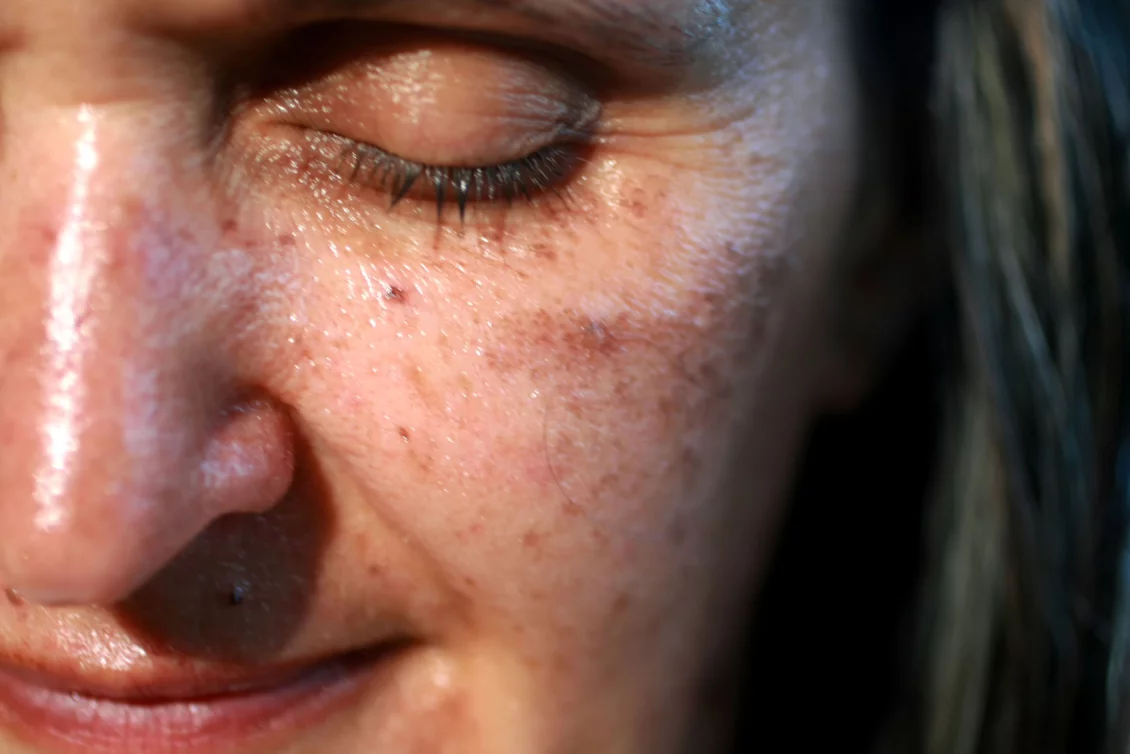Brown spots symptoms: on the face and body
If you know the main causes of brown skin spots, you can avoid them from the outset.These are the most common causes of dark spots.
- Sun exposure: Prolonged exposure to the sun’s UV rays causes an increase in melanin production and leads to the development of dark spots.This is particularly true of areas that are often exposed to sunlight, such as the face, hands, arms and shoulders.
- Hormonal changes can lead to the development of dark spots. Melasma is a condition that is often caused by hormonal imbalances and leads to brown spots on the face. Postinflammatory hyperpigmentation (PIH): inflammation caused by acne, insect bites or other skin injuries leads to excessive melanin production. brown spots can form as the skin heals, especially in individuals with darker skin tones, such as the face, hands, arms and shoulders.
- Genetic predisposition can influence the skin’s sensitivity to dark spots. There is a high probability that you too will be affected by brown spots on the skin if your parents or close relatives have them.
- Friction caused by clothing:
In response, areas of skin that come into continuous contact with substances and are therefore exposed to friction can develop dark brown spots.
- Ageing: As the natural skin processes weaken with age, it is no longer possible to spread melanin evenly.This could cause pigment to accumulate in certain areas, resulting in dark brown to black skin spots.
Moles and liver spots
Although moles and birthmarks are different terms, they are the same form of hyperpigmentation.Liver spots have nothing to do with the liver, as their name suggests.The pigment spots are sometimes also referred to as beauty marks. Moles”:/en/birthmark-removal-berlin.html (also known as liver spots) may be present at birth, but they can only develop in the course of life.Where moles develop on the body varies from person to person.
They can be very rare, but can also occur in large numbers. Their color ranges from brown to almost black.
Age spots
The skin spots known as age spots are usually seen from the age of 40, but in some cases a little earlier. This type of hyperpigmentation is particularly visible on the face, décolleté and hands, where the brown, sometimes reddish spots occur. Age spotsFreckles
Freckles mainly appear in summer and are small, almost dot-shaped brown to reddish spots on the skin. In the winter months, however, they are barely visible or not visible at all. The tendency towards freckles is essentially genetic. The small pigment spots are particularly common on fair skin types with blonde or reddish hair. Freckles mainly appear on the face, but they can also occur on other parts of the body, such as the shoulders, arms, hands or back.
Pregnancy mask or melasma
Melasma is a skin discoloration that is usually brown to brown-grey over a large area and mainly affects the face.The brown patches of skin are most common on the forehead, bridge of the nose, cheeks and upper lip.Melasma is usually hormone-related and occurs particularly in pregnant women.Melasma is also known as a pregnancy mask due to its sometimes mask-like appearance. A melasma can also be caused by hormone replacement therapy or hormonal contraceptives. Ideally, the brown spots on the skin disappear when hormone levels return to normal.Brown spots after surviving a skin infection
Especially if you have already had experience with acne, you may already be familiar with the term post-inflammatory hyperpigmentation. These discolorations are brown and can form after a skin infection. This often occurs when the skin is prone to acne. However, this phenomenon can also be seen in psoriasis, neurodermatitis, laser treatments and chemical peels. This form of pigmentation can be similar to conventional freckles, but they are more pronounced. The positive news is that the brown skin spots usually disappear on their own. However, this process can take anywhere from a few months to years.
Café au Lait spots
Light brown, typically even pigmented spots that are reminiscent of café au lait are known as café au lait spots. They are usually already present at birth and are mainly found on the limbs or trunk.
Other types of brown skin spots
In addition to the pigment spots already mentioned, there are other variants that mainly occur in certain situations.- Brown spots on the skin caused by medication, such as chemotherapy drugs and antibiotics.
- Brown skin spots due to various metabolic disorders
- Pigment spots caused by phototoxic reactions such as skin contact with specific plants, chemical substances or perfumes.
Removing brown spots
Dark spots can be very difficult to remove. But there are some ways you can significantly reduce their appearance. Here you can find effective treatment for dark skin spots. Keep in mind that some of these procedures can be invasive. You should consult a dermatologist before opting for them.
Laser treatment
Laser techniques such as intense pulsed light (IPL) or fractional laser treatment have the ability to target and destroy melanin in areas of increased pigmentation, causing dark spots to fade. Usually, such therapies are performed by doctors or dermatologists.
Chemical peels:
Chemical peels use active ingredients to exfoliate the outer layers of the skin, resulting in the release of new skin and a reduction in dark spots.Cryotherapy:
This process uses liquid nitrogen to freeze and eliminate the excess melanin in dark spots, resulting in a gradual attenuation of these areas.Microdermabrasion:
A mechanical approach is used to remove the outer layers of the skin. This is done by blasting fine crystals onto the surface of the skin at high speed and then vacuuming them away. This removes severe discoloration and regenerates the skin.Removing brown stains
Dark stains can be very difficult to remove. But there are some ways you can significantly reduce their appearance. Here you can find effective treatment for dark skin spots. Keep in mind that some of these procedures can be invasive. You should consult a dermatologist before opting for them.
Laser treatment
Laser techniques such as intense pulsed light (IPL) or fractional laser treatment have the ability to target and destroy melanin in areas of increased pigmentation, causing dark spots to fade. Usually, such therapies are performed by doctors or dermatologists.
Chemical peels:
Chemical peels use active ingredients to exfoliate the outer layers of the skin, resulting in the release of new skin and a reduction in dark spots.
Cryotherapy:
This process uses liquid nitrogen to freeze and eliminate the excess melanin in dark spots, resulting in a gradual attenuation of these areas.
Microdermabrasion:
A mechanical approach is used to remove the outer layers of the skin. This is done by blasting fine crystals onto the surface of the skin at high speed and then vacuuming them away. This removes severe discoloration and regenerates the skin.Are brown spots dangerous?
In most cases, dark spots are harmless and only pose a cosmetic challenge. However, to rule out serious skin diseases, it is important to consult a dermatologist. This is especially true if a dark spot is irregular, changes or is accompanied by other symptoms.



